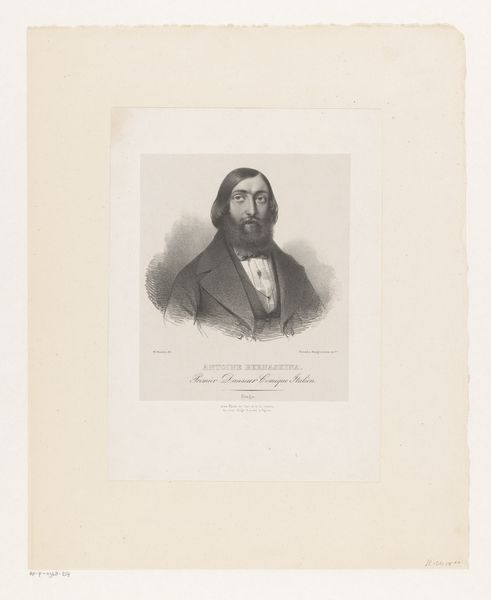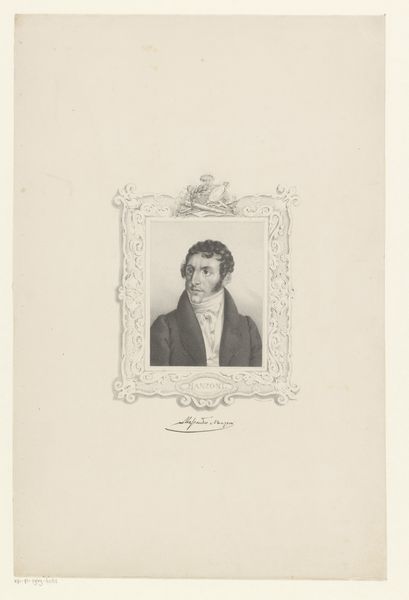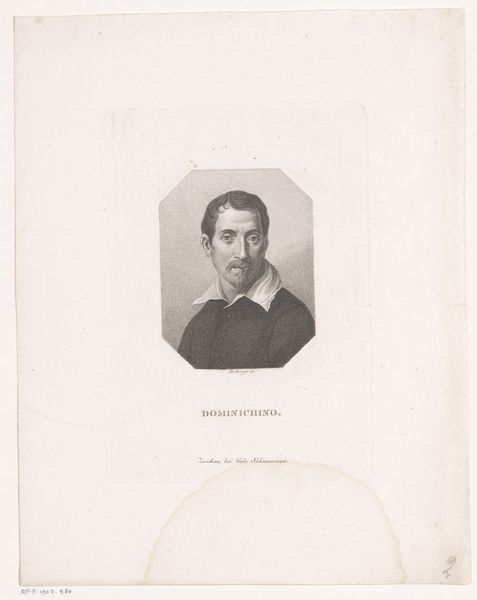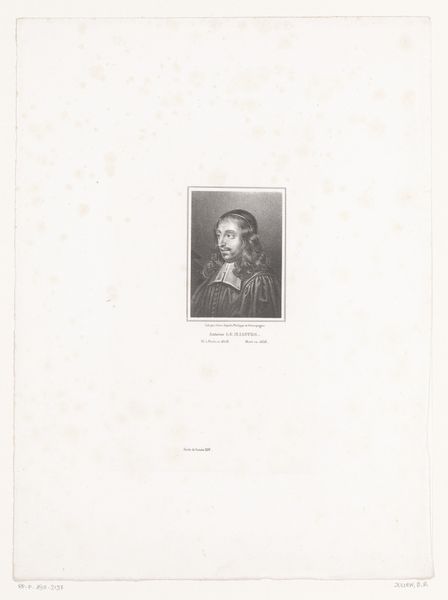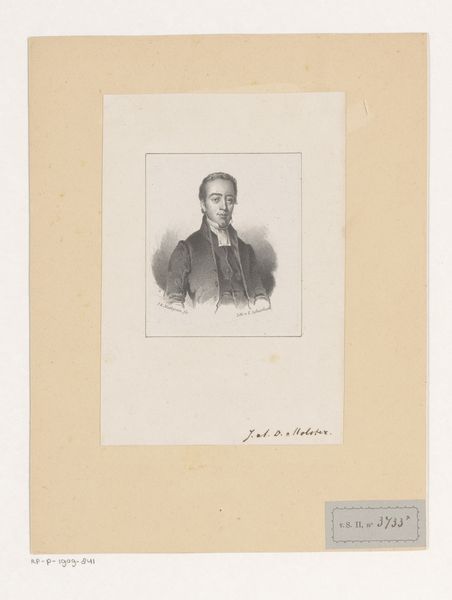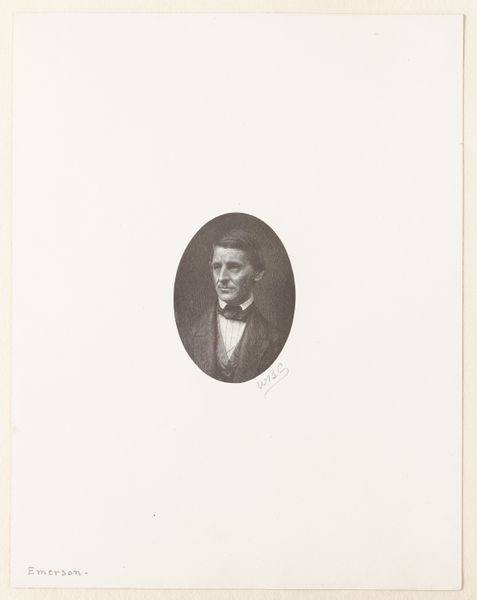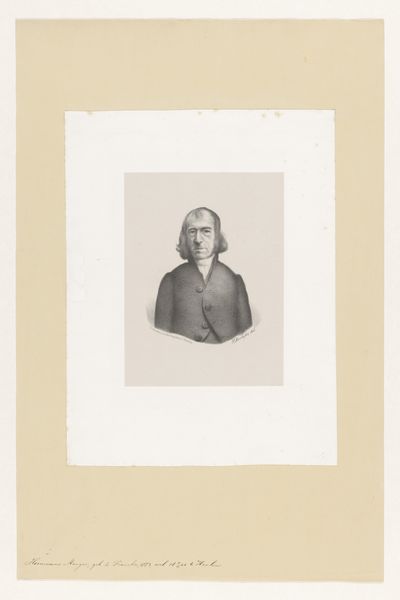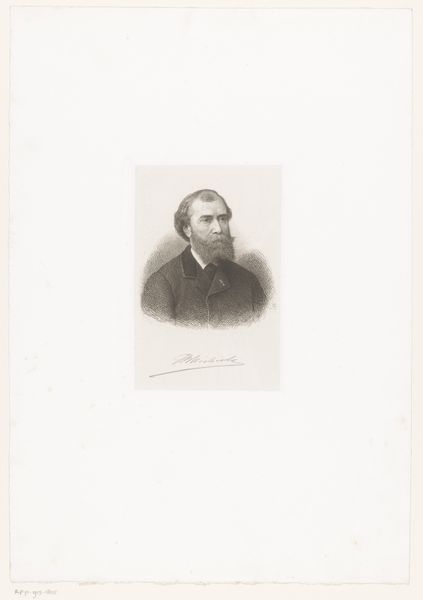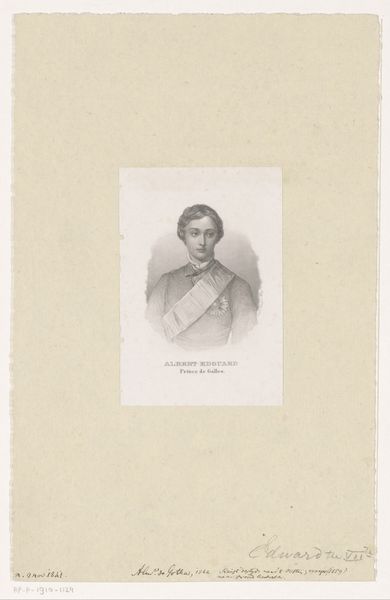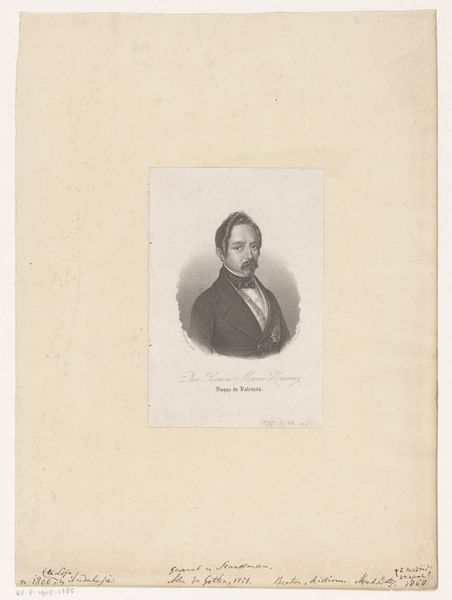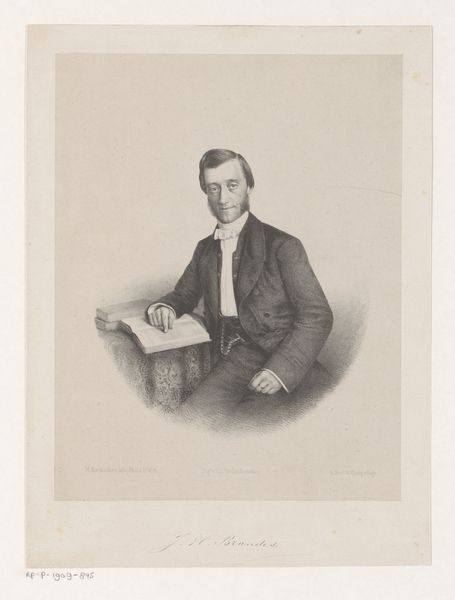
#
photo of handprinted image
#
aged paper
#
light colour palette
#
pale palette
#
pale colours
#
photo restoration
#
light coloured
#
white palette
#
feminine colour palette
#
soft colour palette
Dimensions: height 562 mm, width 400 mm
Copyright: Rijks Museum: Open Domain
Editor: This is Auguste Charles Lemoine’s "Portret van Émilien de Nieuwerkerke," dating from sometime between 1842 and 1874. It has a really serene, almost wistful quality. What do you see in this piece? Curator: I see a carefully constructed image, laden with the visual codes of power and privilege during a tumultuous period in French history. Nieuwerkerke was, after all, superintendent of Fine Arts under Napoleon III. Editor: So how does that context inform your reading of the work? Curator: Well, consider the gaze: direct, yet somehow softened, framed by that beard and hairstyle that speaks to both romanticism and bourgeois respectability. Think about what that carefully cultivated image projects about masculinity and authority during the Second Empire. The "soft color palette," as the AI tags point out, might suggest a certain gentility or cultivated sensibility. Editor: I guess I hadn't considered how intentional the "soft palette" could be. Does the medium influence that? Curator: Absolutely! What medium do you think this is and how would that shape its function during this period? Editor: Hmm...it's like a photo of a handprinted image. Was this portrait meant for mass distribution? I'm wondering who had access to this image. Curator: Exactly! This access dictated how political power was constructed and consumed during the Second Empire. Reflect on how Lemoine might have intended to convey messages about Nieuwerkerke, Napoleon III, and the Empire to specific groups, or if some meanings were unintended, like with many "official" portrayals of power. Editor: That's really interesting; seeing how visual codes operate and evolve to serve diverse and sometimes conflicting agendas. Curator: Indeed! Thinking critically about visual language reveals power structures at play, yesterday and today.
Comments
No comments
Be the first to comment and join the conversation on the ultimate creative platform.

